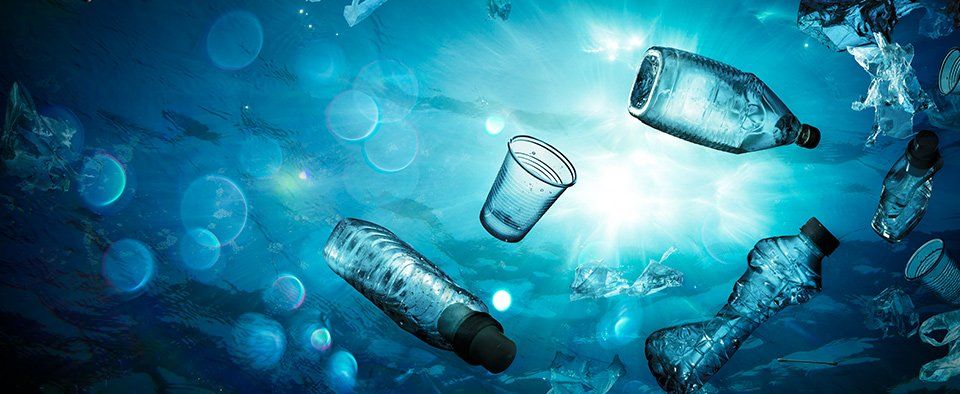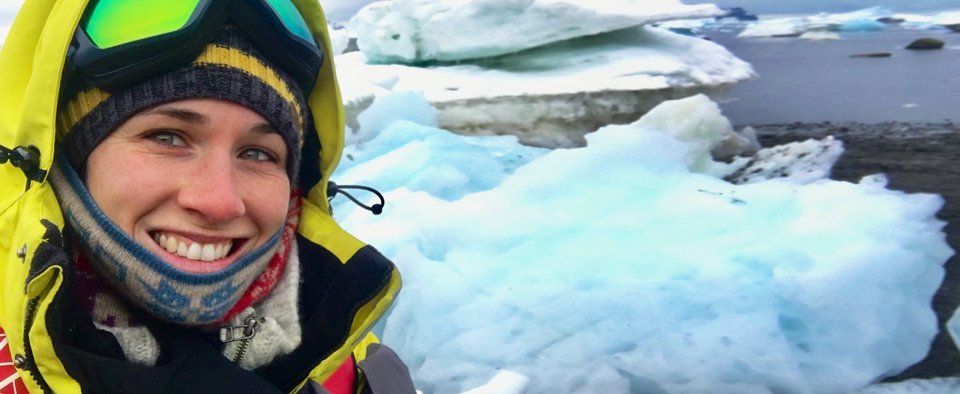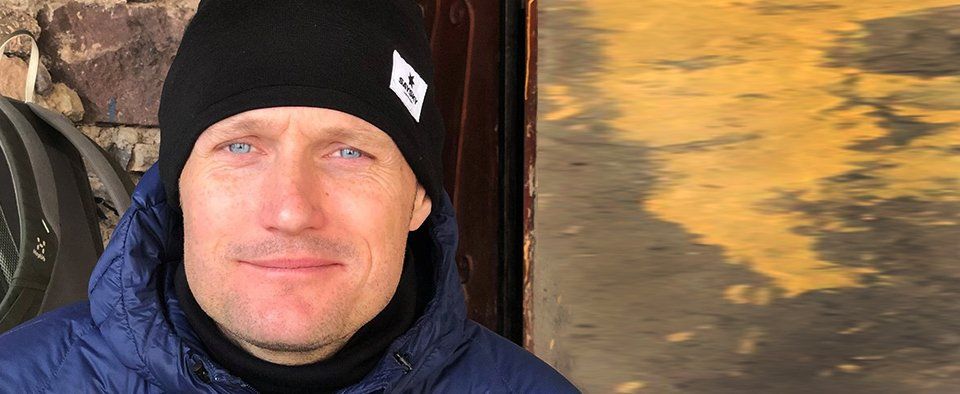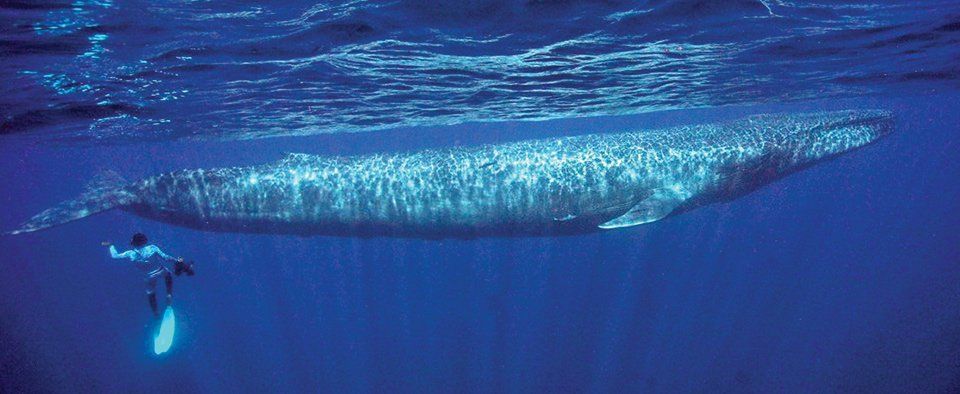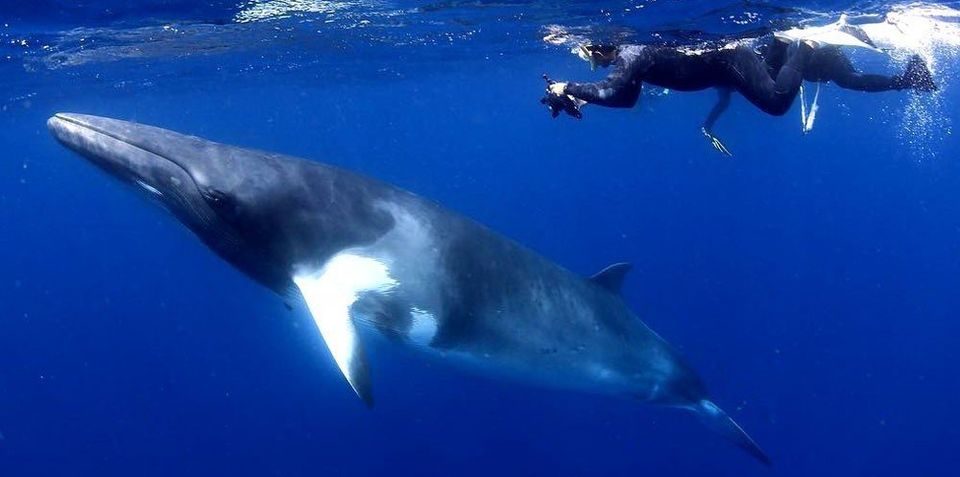No WAY!…
Have you heard that you can swim with the most elusive and mysterious whales on the planet in the most beautiful natural wonders of the world, The Great Barrier Reef!!!
Have you heard that you can swim with one of the most elusive and mysterious Whales on the planet? The Minkes that visit the Great Barrier Reef during winter were only discovered in the 1980s and are believed to be an undescribed subspecies of the Northern Hemisphere Minke’, commonly referred to as the “Dwarf Minke Whale”
At Majestic Whale Encounters we can take you on an incredible journey to swim withe these very inquisitive and curious whales in one of the seven natural wonders of the world : Australia's Great Barrier Reef!
https://www.majesticwhaleencounters.com.au/june-july-barrier-reef-tour-2019
What is a “Dwarf Minke Whale”(DMW) and where can I find them?
Dwarf Minkes grow to approximately 8m long, the females are said to be slightly larger than the males. It is on record that DMWs are the second smallest type of Baleen Whale after the Pygmy right whale. They tend to reach sexual maturity at around 6-8 years
Distinctive Characteristics
The DMWs have fins that are white at the base with a dark tip, a white shoulder patch where the flipper joins the body and dark patches extending in front of the flippers onto the throat.
Different species of Minkes
The two species of minke whales are the common (or northern) minke whale and the Antarctic (or Southern) minke. We now know that we can categories the common minke into two or three subspecies! the North Atlantic minke whale, the North Pacific minke whale and dwarf minke whale. All minke whales are part of the rorquals, a family that includes the HumpbackWhale, the Fin Whale, the Bryde's Whale, the Sei Whale and the Blue Whale.
Distribution and Population
There is VERY little known about the Dwarf Minke Whale.
We don’t know their population size other than studies done on the ‘interacting’ population on the Great Barrier Reef ( whales that interact with humans which is said to represent an ‘open population’ subject to immigrations and emigrations through each season of a minimum of 700 individuals.
Their migration is unknown! Pretty incredible hey especially in our modern world with every kind of technology available, so very elusive are these whales!
Here is a map of where we do know they visit in mostly in the Coral Sea - Ribbon Reefs where we swim with them!
Feeding
The DMWs food consists of schooling oceanic fish and krill, They are not known to actually feed during their time in the Great Barrier Reef waters but may feed opportunistically in the Coral Sea. Only a few whale poos have been observed in Great Barrier Reef Waters!
Lifespan and Life History
Once again family little is known as to exactly how long these guy live But other Minkes may love for 60+ years. Calves are most likely weaned at around 6mths. They are 2m when born and no one actually knows where they are born or of there is a specific breeding ground where they may go to mate and give birth (like Humpback whales for example) Newly born calves have been observed near Fraser Island and Lady Elliot Island and in the Great Barrier Reef!
Behaviour
Active, highly manoeuvrable whales which can swim at >20 knots for at least short bursts and may dive to at least 140 metres. Most sightings are of a single or pair of animals, but groups of 20+ whales may occur around a boat during a single encounter. Occasional breaches (a whale propelling its body rapidly out of the water) have been observerd in the northern Great Barrier Reef. Regularly approach stationary or drifting vessels and may remain with the vessel and swimmers for several hours. They usually surface once for a breath and dive for periods from half a minute to up to twelve minutes. [Minkewhaleproject]
Bubble Release
One spectacular but rare behaviour is when a whale exhales and releases air when still submerged. This could be either:
- a bubble trickle , when the whale releases a small trickle of bubbles from its blowholes.
- a bubble trail , when the whale releases a trail of bubbles while moving forward. In this case the bubbles may look like a screen or a curtain when passing upwards through the water column.
- a bubble blast , when the whale abruptly releases a large amount of air forming a cloud of bubbles. The whale stays submerged and the behaviour is not immediately followed by breathing.
Whales may also occasionally exhale immediately prior to breaking the surface to breathe (a subsurface exhalation
). The released air may form a stream or a cloud of bubbles, depending how fast the whale travels and how rapidly the air is released.[minkewhaleproject]
Jaw gape, gulp, jaw clap
These are rare and very spectacular behaviours.
During a jaw gape , a whale opens its jaws exposing its baleen plates and oral cavity. This behaviour can be displayed on the surface (e.g in combination with a spyhop/headrise) or underwater and can range from the whale flashing its baleen to fully opening its mouth.
A gulp occurs when a whale opens jaws and partly or fully inflates its throat pouch. The whale appears in total control of how much water is entering its oral cavity and to what degree the throat pouch is extended (see Arnold et al. 2005).
A jaw clap occurs when a whale opens its mouth above the surface and its jaws are brought together with a loud crack.[Minkewhaleproject]
Sounds
Grunts, moans and belches which can be heard by snorkelers. Also a distinctive sound with 3 short pulses followed by a slight upsweep. The low frequency sounds can travel great distances underwater and may allow scattered groups of whales to maintain contact over kilometres or tens of kilometres. Minke whales are not known to echolocate but their sounds could be used to detect large objects (e.g. reefs) The vocalisation from Dwarf Minkes is often referred to as “Star wars “ for obvious reasons, listen to this audio below:
Threats to The Dwarf Minke Whale
Because of the DMWs small size they were rarely taken by commercial whalers. Japan wishes to resume hunting the larger Antarctic Minke Whale in in the Southern Oceans. If such whaling were to resume it is likely that Dwarf Minkes would then be at risk also.
The highest threat DMWs face at present is entanglement in fishing, congestion of marine debris/plastics and the ever changing climate change
Swimming with Dwarf Minkes:
We are blessed to be able to take a limited number of guests between a very small window in June and July to swim with these incredibly curious and mysterious whales:
https://www.majesticwhaleencounters.com.au/june-july-barrier-reef-tour-2019
These whales are highly inquisitive and often approach snorkelers to within close distances, sometimes interacting for extended periods for many hours on end! Close approaches (3m or less) occur occasionally and are more likely to happen when snorkelers are stationary in the water, holding onto a rope, remaining relatively still and calm.
Very close
approaches of 1m or less are rare, but have occurred in longer encounters where the whales’ confidence appeared to have increased, possibly due to the predictability of swimmers' movements.
To learn more about these amazing animals or have the chance to get up close and personal
contact us at www.majesticwhaleencounters.com.au

